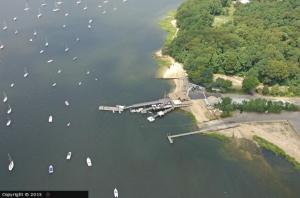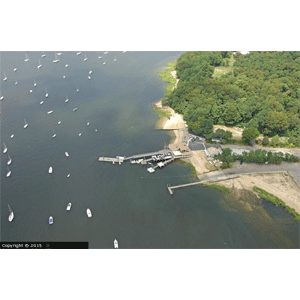 Roslyn Harbor, along with other villages on the North Shore, are subject of a recent study, one that examines the sewering feasibility of Hempstead Harbor.
Roslyn Harbor, along with other villages on the North Shore, are subject of a recent study, one that examines the sewering feasibility of Hempstead Harbor.
Recently, Nassau County Legislator Delia DeRiggi-Whitton and Sea Cliff Mayor Bruce Kennedy met with Rep. Steve Israel to discuss the status of the Hempstead Harbor Sewering Feasibility Study.
The study originated with concerns about pollution from Crescent Beach in Glen Cove, and at DeRiggi-Whitton’s urging was expanded to cover the eastern shore of Hempstead Harbor, including unsewered portions of Roslyn Harbor, Glen Cove, Sea Cliff and Glenwood Landing.
The firm of Dvirka and Bartilucci has been selected to carry out the study, which will take about six months. While most of Nassau County is sewered, the portion that is not is primarily the north shore, where 70 percent of the land area is unsewered. Nitrogen and bacteria from cesspools are considered the biggest threats to the bays and our drinking water aquifer.
DeRiggi-Whitton’s office said that the study is one of many efforts undertaken to improve water quality in Hempstead Harbor. The Hempstead Harbor Protection Committee working with the Coalition to Save Hempstead Harbor undertook an additional monitoring program to participate in a Long Island Sound Report Card program. The grade, the legislator said, was based primarily on three factors; dissolved oxygen scored 88 percent, a good grade and dissolved inorganic nitrogen scored 79 percent, a moderate grade. Water clarity scored 41 percent, a poor grade. However, the tiny plankton and algae that lowered the water clarity reading are the main source of food for the clams and oysters that made Hempstead Harbor the second largest source of hard shell clams in New York State. None of these factors, DeRiggi-Whitton pointed out, impacts human health.
“We’ve made great strides to clean up Hempstead Harbor. At one time the challenges seemed insurmountable” said DeRiggi-Whitton. “The work of the Coalition to Save Hempstead Harbor and the Hempstead Harbor Protection Committee has returned the Harbor to a place where families want to swim, fish, kayak, observe wildlife and walk along its harbor trails. Let’s continue to find the resources to improve the health of the harbor and to make surrounding communities even more desirable places to live. This Report represents a tremendous improvement over the last 20 years when the Harbor was considered a dead zone, but there is still more to be done.”



































